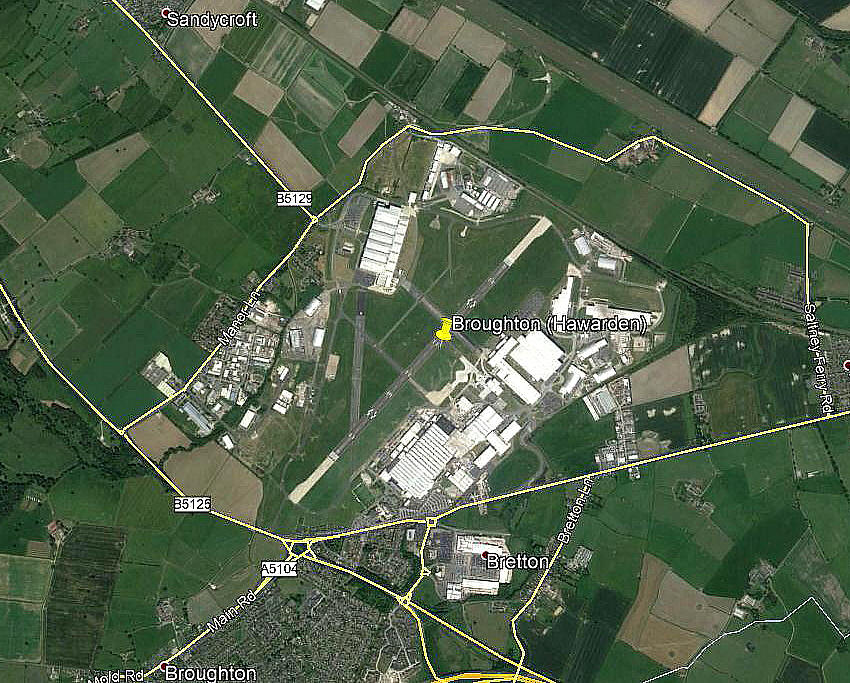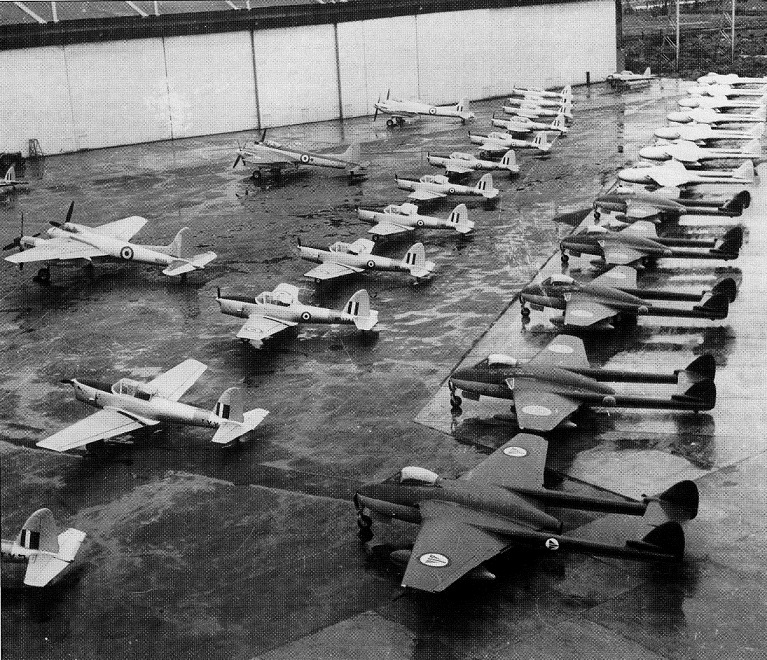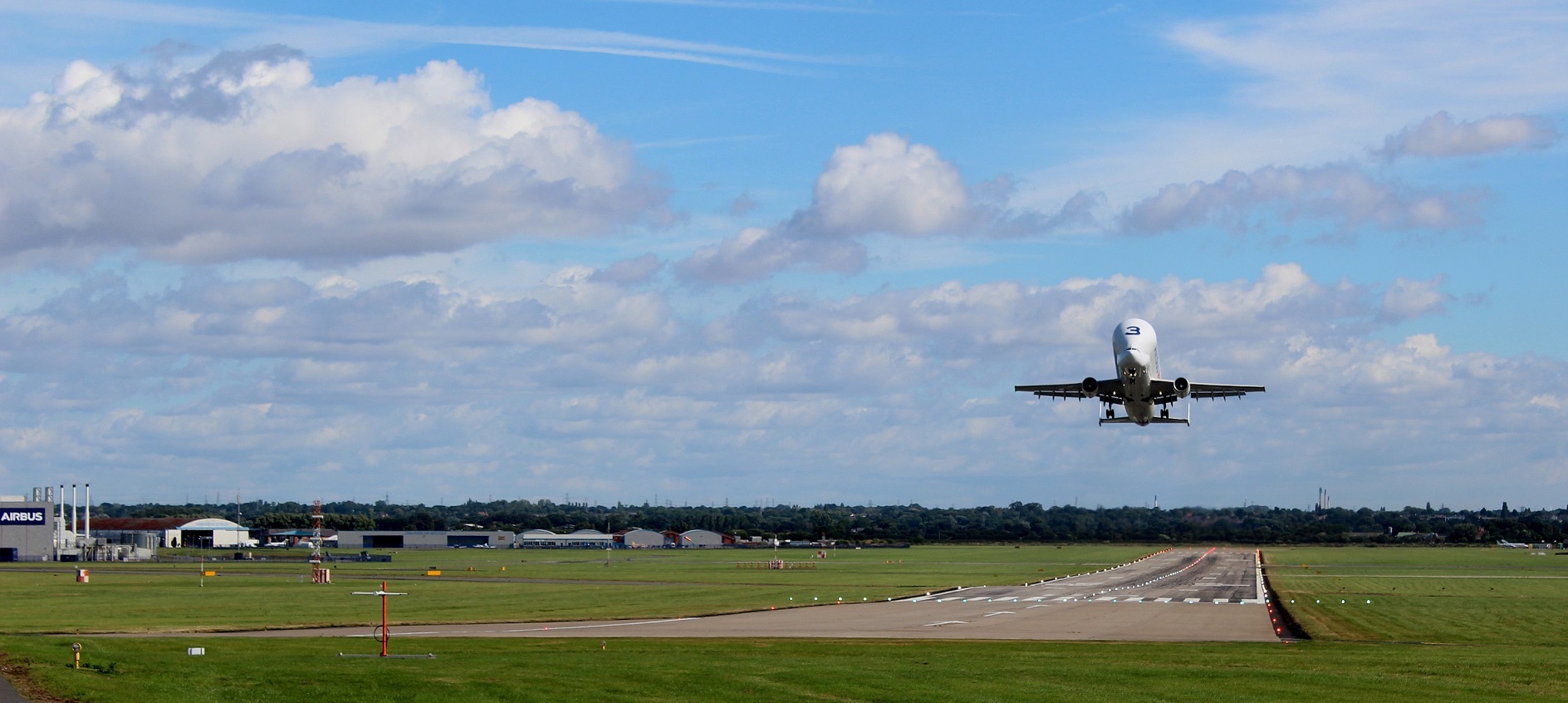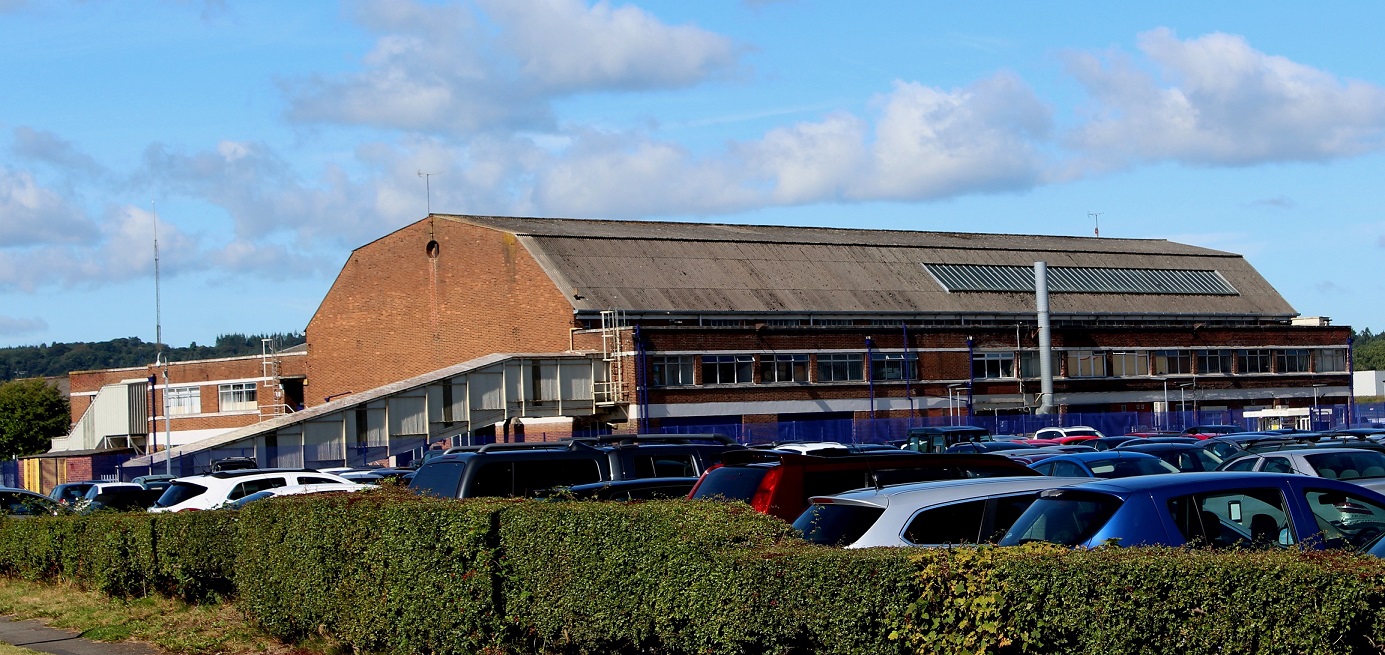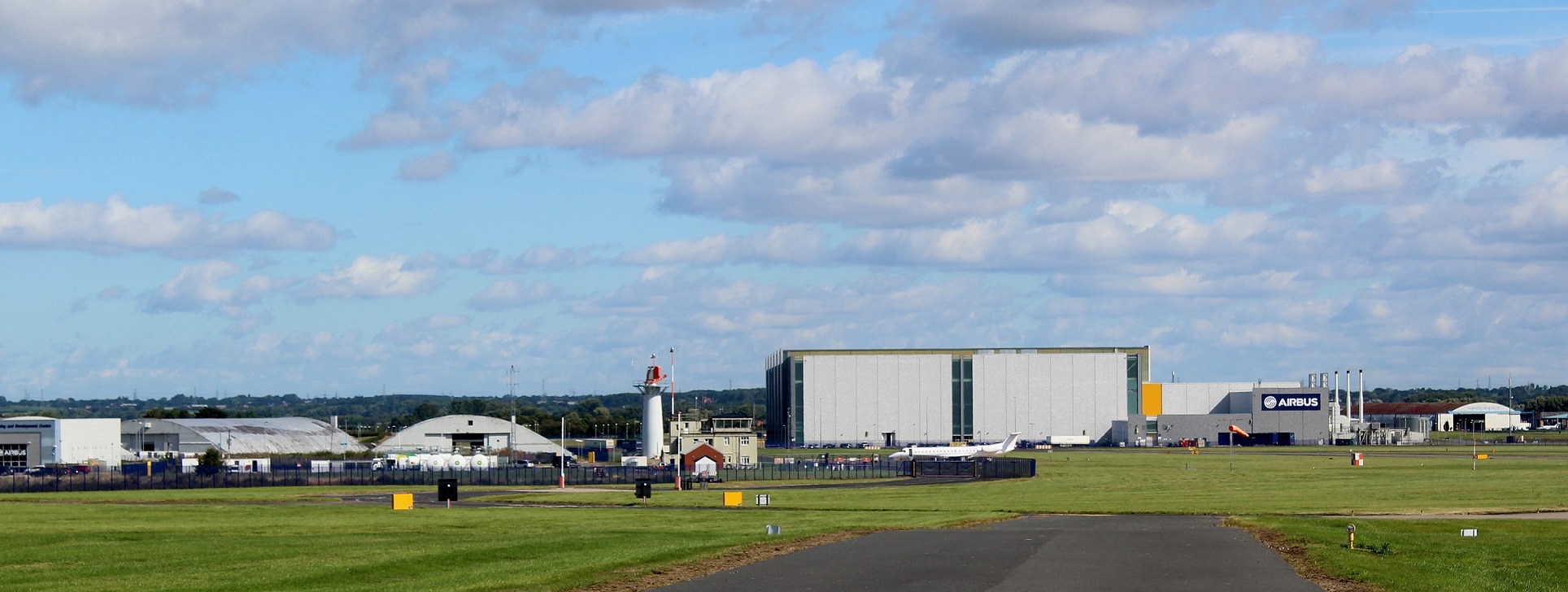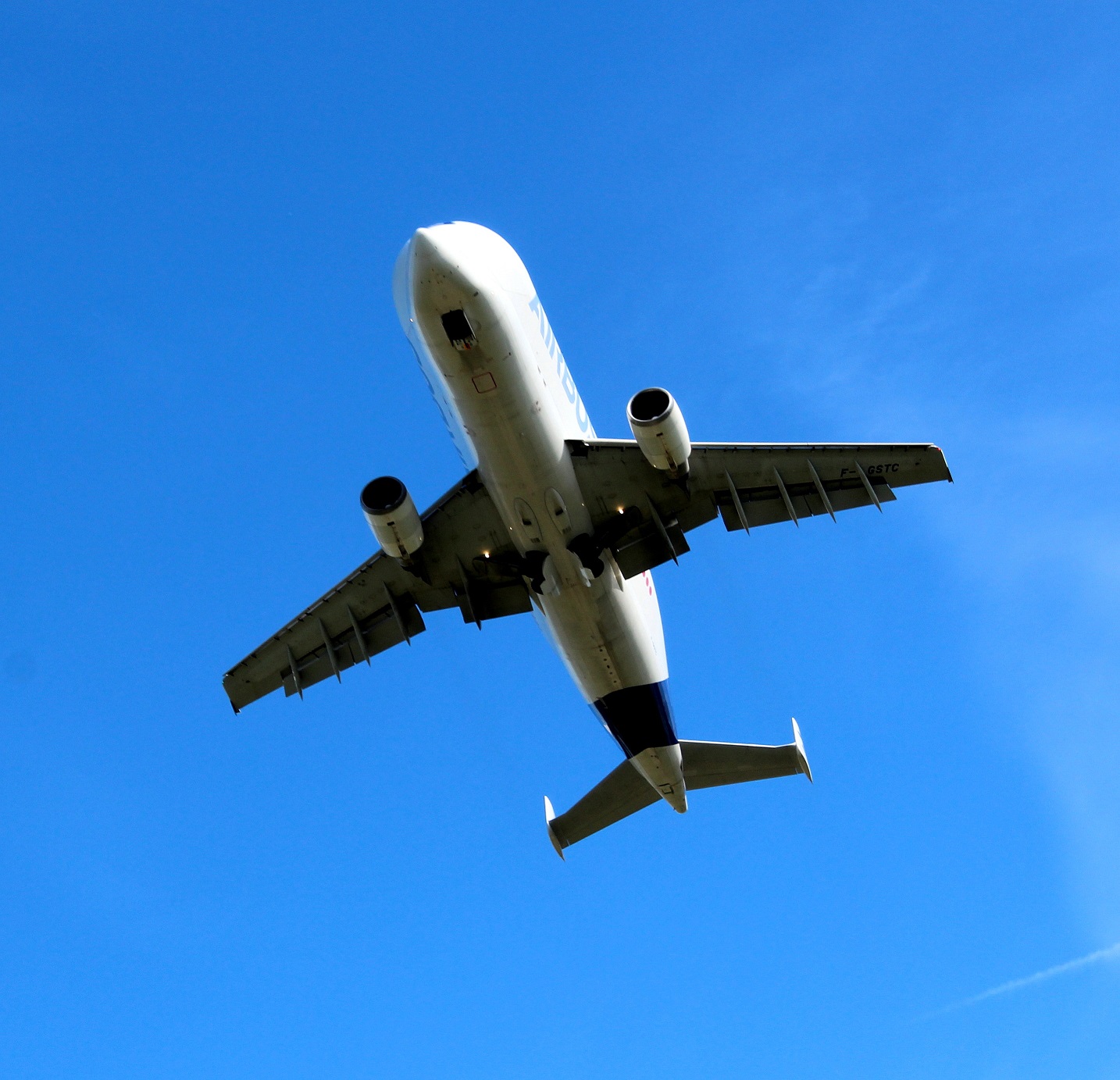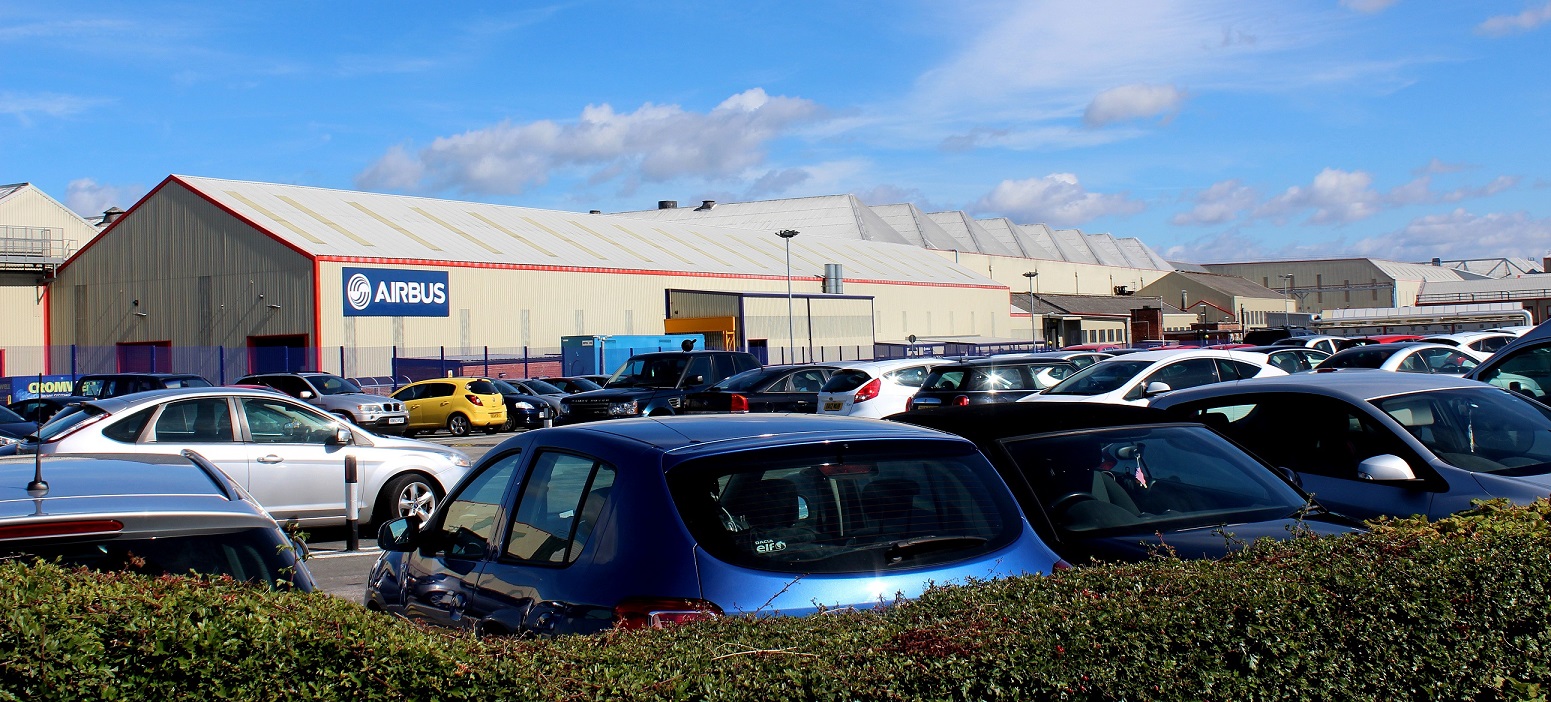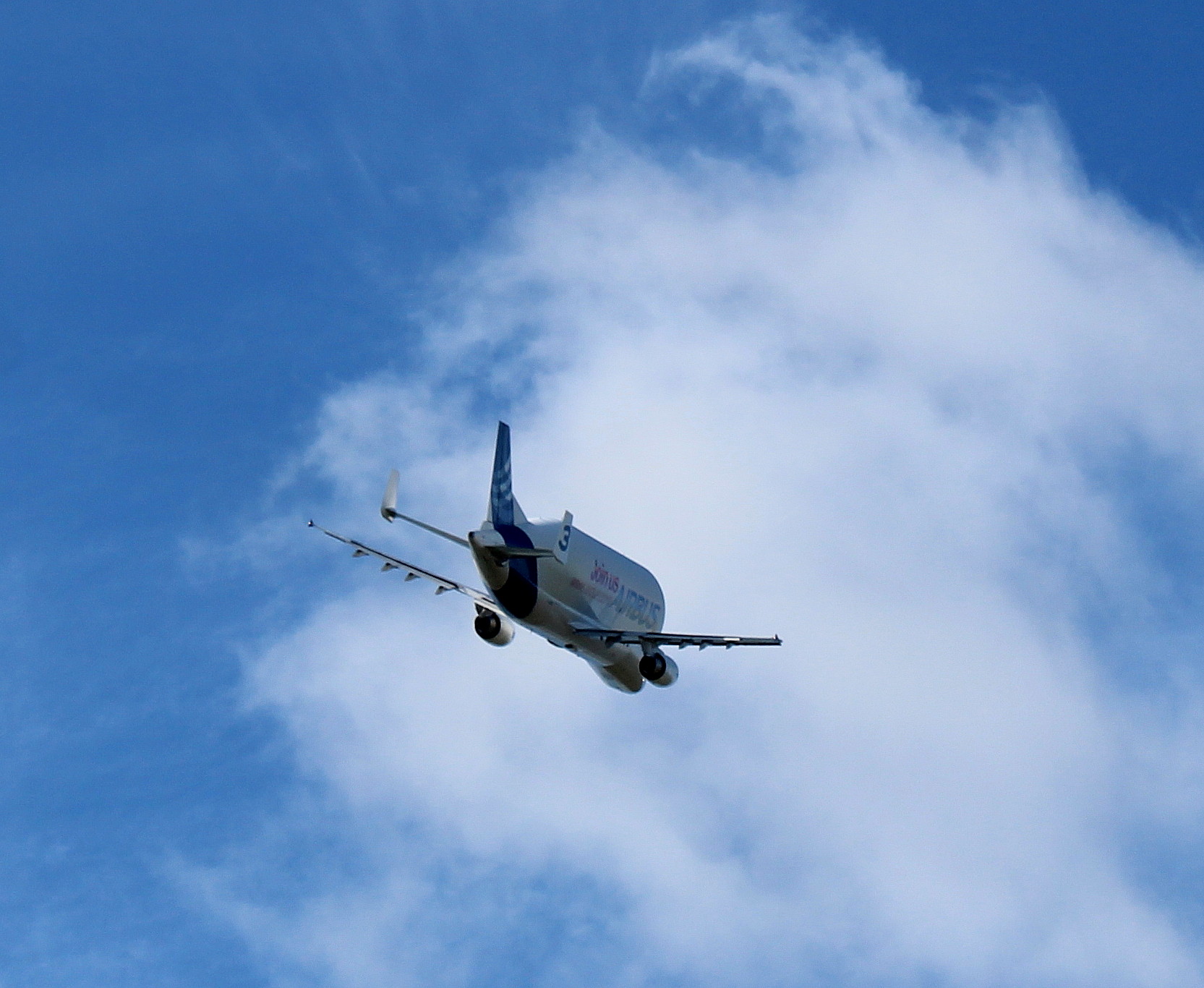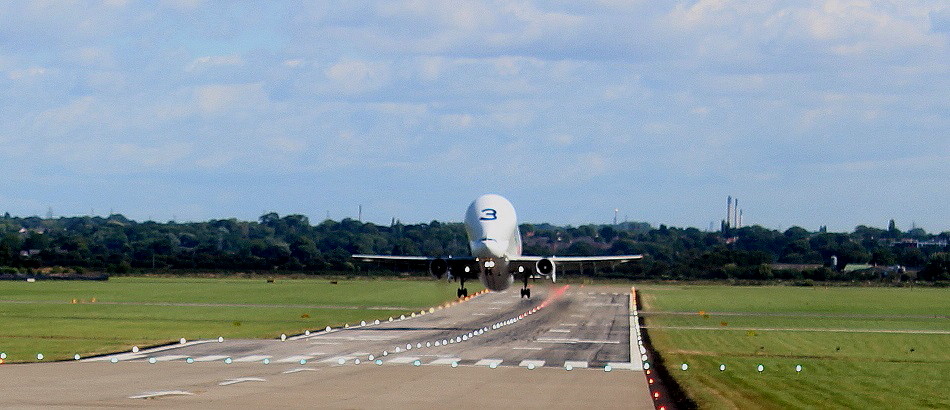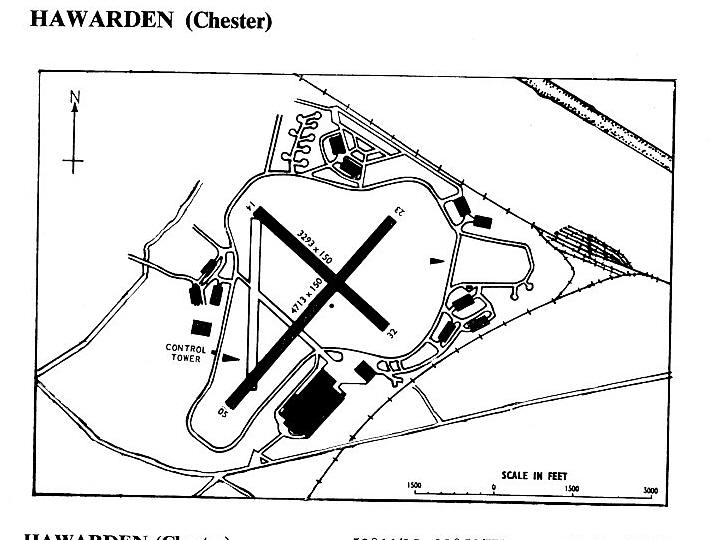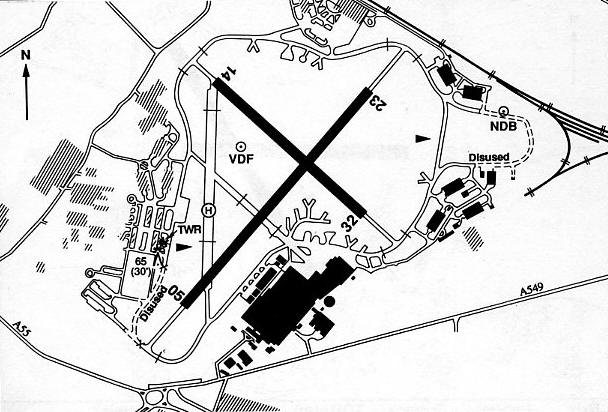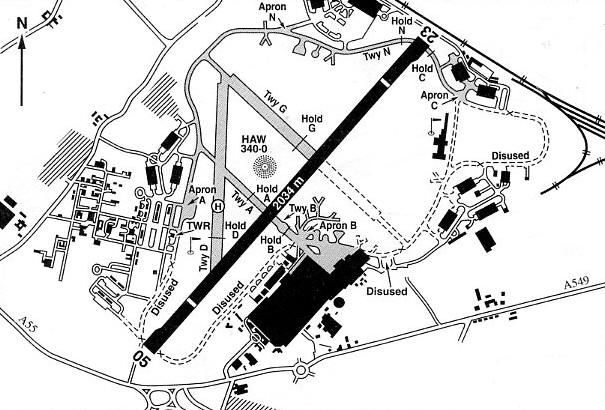Hawarden
HAWARDEN: Military aerodrome later civil aerodrome/airport
Note: This picture was obtained from Google Earth ©
(Often called BROUGHTON, sometimes referred to as CHESTER)
Note: A fascinating picture showing Hornets, Chipmunks and Vampires on a very wet apron.
Military users: Used as a RLG for SEALAND in the 1930s at least
PICTURES: August 2016, by the author
Note: Airbus have a fleet of five A-300 Belugas and it appears that, (in 2016 at least), two a day arrive at HAWARDEN.
WW2: RAF Fighter Command 12 Group
41 OTU [Operational Training Unit] (North Amercan T-6 Harvards, North American P-51 Mustangs, Vickers-Supermarine Spitfires)
57 OTU (Spitfires)
7 OTU (Miles Masters, Hawker Hurricanes & Spitfires)
577 Army Co-operation Sqdn (Airspeed Oxfords, Vultee A-31 & Vickers-Supermarine Spitfires)
Aircraft Storage Unit
ATAS No.3 Ferry Pool
Operated by:
1965: de Havilland Aircraft Division of Hawker Siddeley Aviation Ld
1975: Hawker Siddeley
1980s/1990s: British Aerospace plc
2000: British Aerospace (Operations) Ltd Airbus Division
British airline users: Post 1945: British Eagle, Humber Airways
Flying club/school: Pre 1940: Liverpool and District Aero Club (also at COP HOUSE FARM?)
Post 1945: Chester Flying School (Cheshire), Hields Aviation (Chester)
1959 ‘snapshot’. de Havilland (Chester) Flying Club
Gliding: 1970s only?
Helicopter ops: Hields Aviation Helicopters
Manufacturing: WW2: Vickers-Armstrong (Vickers Wellingtons & Avro Lancasters)
Post 1945: The de Havilland Aircraft Co, (DH.125), Hawker Siddeley Aviation, (HS125)
British Aerospace: (BAe 125), Raytheon Corporation, (Hawker 800 & 1000),
British Aerospace Airbus later BAE SYSTEMS Airbus (Airbus division producing wings)
Maintenance: Post 1945: Hawarden Air Services
Location: N of A55 & A5104, 4nm WSW of Chester
Period of operation: Late 1920s? (some say 1939 to present day - probably continuous?)
Note: These maps are reproduced with the kind permission of Pooleys Flight Equipment Ltd. Copyright Robert Pooley 2014.
Runways:
WW2: 05/23 1441x46 hard 14/32 1020x46 hard 01/19 1006x46 hard
1965: 05/23 1437x46 hard 14/32 1004x46 hard
1990: 05/23 1437x46 hard 14/32 1004x46 hard
2000: 05/23 2035x45 hard
NOTES: It is very interesting to research WW2 flying activity, (let alone WW1 flying activity in this area), and to try and realise what was going on! A lot was going on.
A VERY BUSY PLACE
In so many ways the system of flying organisation appears administered by fools according to todays standards; but these ‘fools’ did achieve something quite remarkable. For example in the summer of 1942, peaking on the 6th September, 1002 movements were recorded in eleven hours! Ninety one movements an hour on average, a record HEATHROW would be proud of today, except they wouldn’t have to deal with several accidents along the way! Burst tyres, bent props, etc, etc.
BUILDING A WELLINGTON
The following tale might seem bizarre, (especially because the exact date of the event happening appears lost!), but it really is an accurate account. I have found several accounts of this. On the 19th Sepember 2010 BBC TV broadcast a programme on the event hosted by Max Hastings. This involved a big propaganda exercise to build a Wellington bomber in a record speed – 24 hours - blowing the previously held American record to bits – which was 48 hours in a aircraft factory in California. No mention was made about the Wellington being pretty much obsolete at that time though.
The record attempt was either made in the early summer, or October 1943. Can a date now be put on this astonishing achievement? Obviously the very best workers were really up to speed by then in building the type, and, needless to say they cheated, (or should we say showed initiative?), as many components were actually pre-formed sub-assemblies not normally used in the regular production process. Does this actually matter? I think not as the project was a one off.
Propaganda is a highly effective weapon in warfare. It appears the workers were mostly volunteers giving up their weekend for the record attempt. Accounts seem to vary. Whatever the truth of this the Wellington LN514 was completed in 23hrs 50mins and test flown without mishap immediately afterwards, after 24 hours 48 mins. An astonishing achievement!
A CONTENTIOUS POINT?
As pointed out elsewhere the bosses of the British aviation industry, (probably in other industries too?), weren’t on the whole much interested in their effectiveness in winning the war. (I suspect they’d mostly have been perfectly happy supplying the Nazi regime if they'd won the war. Getting the largest production contracts was their aim regardless of consequences. Hence they built thousands of obsolete and surplus aircraft which languished in various fields never seeing any service. If I appear cynical, you should see some of the remarks made by some quite senior people in the RAF - who regarded these bosses as basically being crooks!
THE VICKERS WELLINGTON
There does however appear an interesting statistic: It is claimed that the production of 11,461 Wellington bombers comes third in WW2 after the Hurricane and Spitfire! But .we really must remember that the Wellington bomber, (as a design concept from Barnes Wallis), was far more advanced in so many ways, from anything the world had ever seen before. Its unique ‘geodetic’ construction gave the unfortunate crews operating the type much needed confidence once the bombing campaign against Germany really kicked in. It really could survive a huge amount of battle damage and was used for a huge variety of duties apart from being 'just' a bomber.
SOME OTHER DETAILS
In late 1944 HAWARDEN was a pretty big RAF OTU having 2288 men plus 364 WAAFs on station.
Rather odd this, according to one map of the aerodrome supposedly from 1944 in a highly regarded aviation history book, another shorter runway, roughly 800x46 hard is shown SW of and parallel to 14/32. Was it just a very wide taxiway?
A REVISION OF IDEAS
As a truck driver and private pilot (now retired) HAWARDEN has always been a rather dull place, not much happening except for manufacturing, barely worth looking at. However in 2010 I learnt from Ron Smith in his British Built Aircraft Vol.5 book that I now needed to seriously rethink my ideas about this airfield, especially regarding manufacturing. It was once a very busy place even after WW2. For instance in 1948 ‘The de Havilland Aircraft Co Ltd’ took over this site from ‘Vickers-Armstrongs Ltd’. I have to say I was astonished by what Ron Smith had to say. For example he gives this list which I have much abbreviated:
Mosquito = 81 (DH were still building Mosquitos in 1948?)
Hornet and Sea Hornet = 149
Vampire = 792
Venom = 775
Dove = 209
Chipmunk = 889
DHC.2 Beaver = Two production batches. No numbers given?
Sea Vixen FAW2 from 1962 to 1966. No number given?
Heron = 141
DH.106 Comet. I had always assumed all the DH.106 Comets were built at HATFIELD. It now appears one Comet 1 and twelve Comet 4s were built here.
Two Comet 4C airframes were modified by Hawker Siddeley to become Nimrod development aircraft, XV147 and XV148. It seems XV148 was the first to fly, on the 23rd May 1967. Appears incredible doesn’t it that even into the 21st century we are still flying and even in some cases still developing, designs evolved several decades before. Not that the Nimrod story has a happy ending! Will we ever learn the truth about this fiasco?
A HUGE SUCCESS
De Havilland built their DH.125 business jet here, called the Jet Dragon which first flew on the 13th August 1962. A most astonishing design which has undergone several transformations but still maintaining its original ‘good looks’and handling qualities. The design has passed through several regimes. Firstly de Havilland of course, then Hawker Siddeley who first flew their BROUGHTON built HS.125 on the 12th February 1963. The design then passed to British Aerospace (BAe), then BAE Systems or rather BAe Corporate Jets before being sold off to the Raytheon Corporation in the USA. (Why?) From 1996 most major assemblies were still produced at HAWARDEN before being shipped to Wichita in the USA.
SOMETHING TO CONSIDER
If we British can be proud of nothing else in recent years we seem to always succeed in selling a commercial success to a foreign country? (Why?) I will never understand politics. For some reason all our politicians gaining positions in government since the 1960s have been dedicated to making certain our British manufacturing capabilities must be obliterated? Or, if some should succeed against all expectations, at the very least sold off. This thinking seems to go against the grain of every other State in the EU?
PRODUCING JUST BITS
For many a year, since probably before 1971(?), this site has been part of the Airbus programme producing the wings. The first A300 ‘wing-set’ left BROUGHTON in November 1971. Up to 2002 about 3,000 Airbus wing sets had been produced. I suppose there is some satisfaction to be sought here? Of all aspects of modern aircraft airframe manufacture, the wings are arguably the most crucial and, in design terms at least, complex component to make.
SPOTTERS NOTES
In 1977 it appears the following GA types were based here: DH.80A Puss Moth G-AAZP, DH.82A Tiger Moth G-ANTE, Benson B.8 G-ATFA, Beagle B.121 Pup 2 G-AXDU of Deltair Ltd, DHC-1 Chipmunks G-BAPB, G-BARS and another Chipmunk 22 G-BBRV of the HSA (Chester) Sports & Social Club.
Ken Watkins
This comment was written on: 2016-10-24 14:08:16As an ex-de Havilland student and employee (Hatfield 1946-1953) this excellent site interests me. I am looking for an aerial photograph of the airfield as it was in the 1950s or 1960s. I would like to add it to the other DH airfield photographs in my DHAeTS Group Photo Album. One nit-pick: in your paragraph "The Vickers Wellington", the 'it's' should be 'its', with no apostrophe.
Reply from Dick Flute:
Hi Ken, I shall keep this request posted and hopefully somebody will be able to help. I would also like to add such a picture. And, thanks for the tip. Best regards, Dick
We'd love to hear from you, so please scroll down to leave a comment!
Leave a comment ...
Copyright (c) UK Airfield Guide















